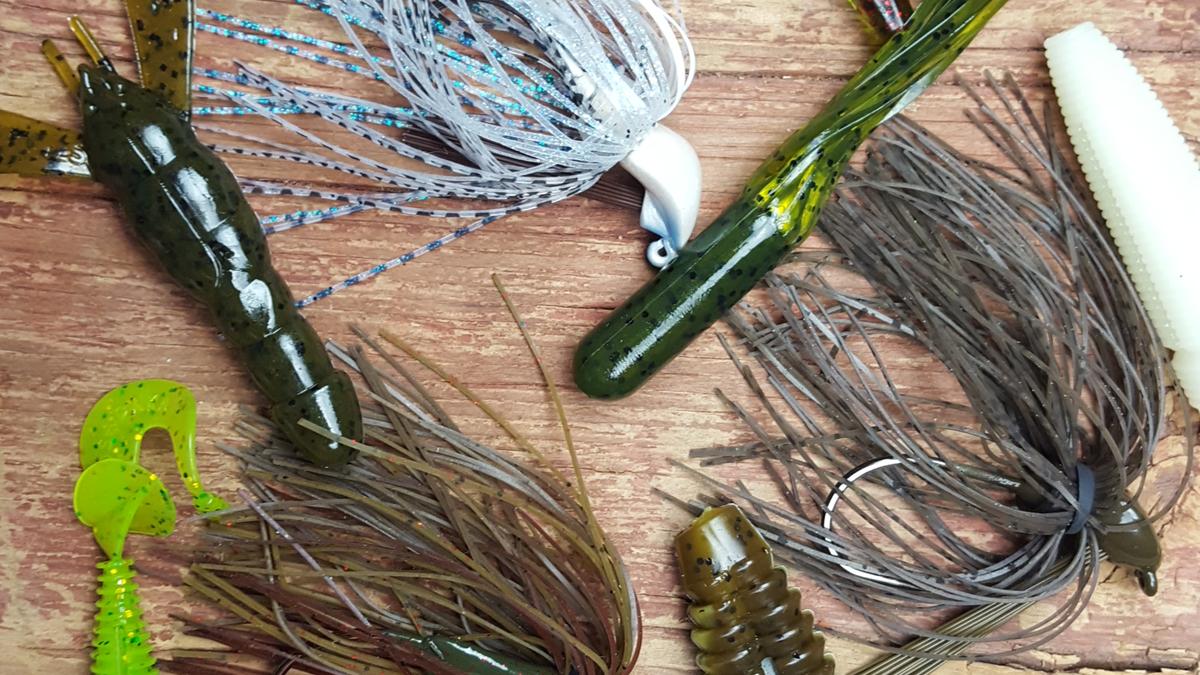How To Pick The Right Jig Trailer For Any Situation
Fishing a jig without a jig trailer is like eating a salad without dressing or toast without jelly.
None have the same pizzazz without the additional condiment. Although a bass would probably bite a standalone jig, the allure of a jig trailer causes bass anglers to consider it standard equipment for jig fishing.
Lure manufacturers offer a wide array of soft plastic jig trailers today in a myriad of sizes, shapes and colors that can be attached to the hook of your favorite jig. The wide variety of choices is important this time of the year because of the constant changing in the weather and the cooling water temperatures.
The weather of autumn and early winter can change a bass’ temperament from aggressive to lethargic sometimes in only a matter of hours so the challenge is to find the jig-trailer combo to create the right profile, descent rate and action of the lure for each situation you encounter on the water.
Bass Chunk Trailers
The most common choice of jig trailer for inactive bass is a plastic chunky bait. Some chunks have straight tails that glide in a subtle fashion while others feature curled appendages or flapping claws capable of creating plenty of tail movement.
Water temperature usually dictates which type of chunk to attach to your jig. If the water temperature remains in the upper 60s or in the 70s, the curly-tail chunk is the best choice since bass seem to prefer a fast-moving lure then. Any time the water temperature drops below 60 degrees, the straight-tail chunk is the best option to present to sluggish bass looking for an easy meal.
Craw Trailers For Skirted Bass Jigs
A soft plastic craw such as the BioSpawn VileCraw is another ideal jig trailer that helps the lure mimic either baitfish or crawfish. A plastic craw generates a lot of action from its flopping pincers which makes it ideal for swimming a jig along boat docks or laydown logs. For a swimming presentation, I like to match a blue craw with a gray-and-blue or gray-and-chartreuse jig to imitate a shad. If bass seem to be feeding more on crawfish, I will combine a green pumpkin or watermelon-red flake craw with a brown or pumpkinseed jig.
Grub Trailers
Other trailers that work well for swimming a jig in the fall include single- or double-tail grubs and small swimbaits. Combine these trailers in pearl, white or silver hues with a gray or white jig to best imitate the colors of baitfish.
The combination of a finesse jig and a flipping tube has been a great bass-catcher for me throughout the fall and early winter. This combo best imitates baitfish that are hugging the bottom in cold conditions. I combine a 5/16-ounce finesse jig with a tube like the Northland Tackle Impulse Tube. Using a tube with a solid plastic head stays on the jig’s keeper better than hollow-head tubes.
Jig Trailers For Cold Water
While many anglers rely on soft plastics for a jig trailer, the old reliable pork rind is still a good choice, especially when the water gets colder and bass move slower. A number 11 pork frog added to a finesse jig still triggers bites from lethargic bass when the water temperature drops into the 40-degree range.
Since most chunks and plastic craws come in various sizes, it pays to experiment with the dimensions of your trailer to create the ideal profile for the quality of fish you are targeting. If you are on a tough fishery known for having small bass or the conditions are really tough, you need to avoid a large trailer. Make your jig a little more compact then by downsizing the trailer.
Trailer sizes also affect a jig’s fall rate, so you can vary the dimension of a chunk or craw to change the descent of the lure. A magnum-size chunk has more buoyancy and a bigger planning surface making it an ideal match for swimming a jig near the surface. Try a small chunk to make a heavy jig fall faster when fishing deep water.
Picking the right jig trailer will help you create a natural look and action on your jig that bass can hardly resist even as the water continues to cool and bass become inactive this season.
Updated July 15th, 2021 at 8:38 AM CT


